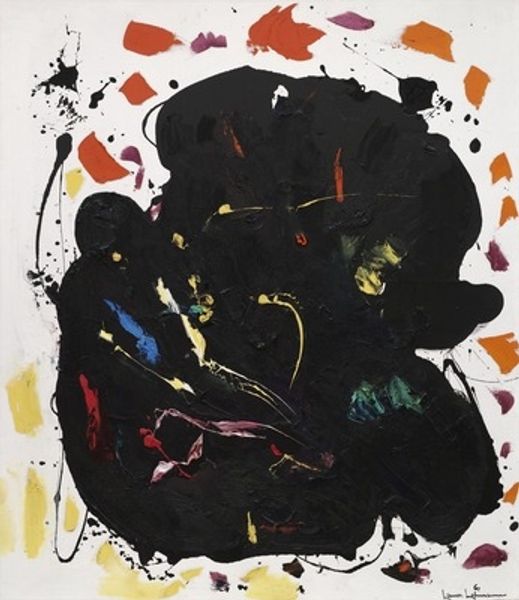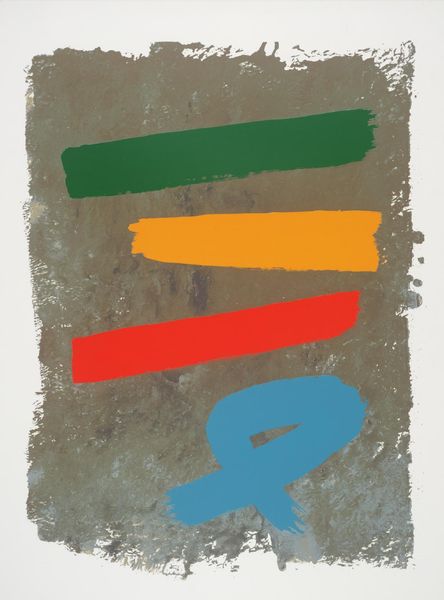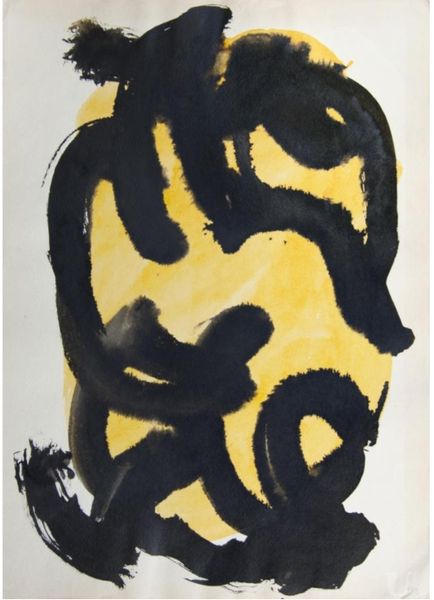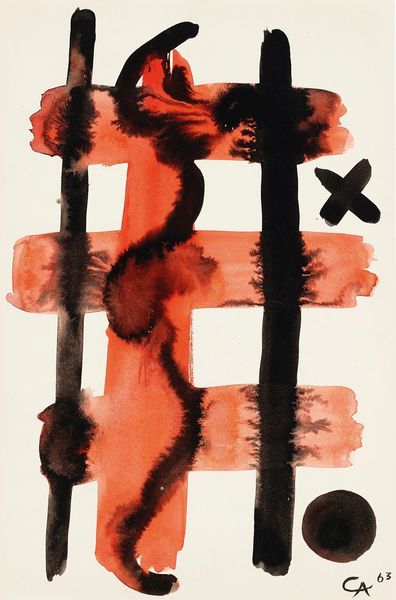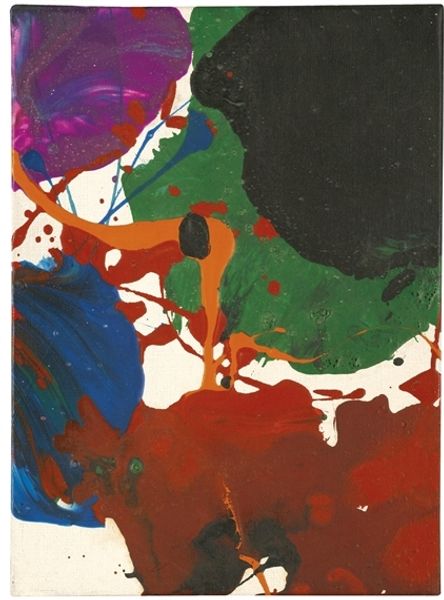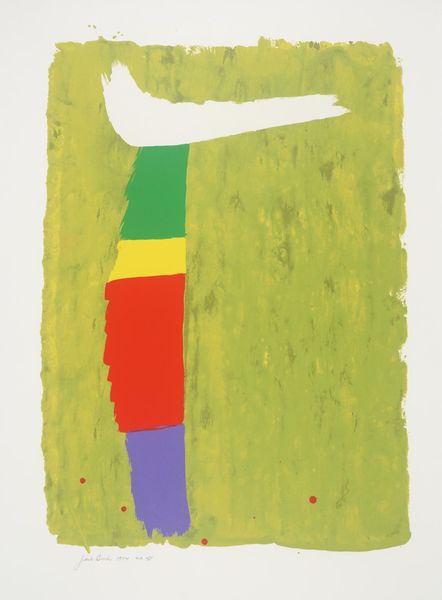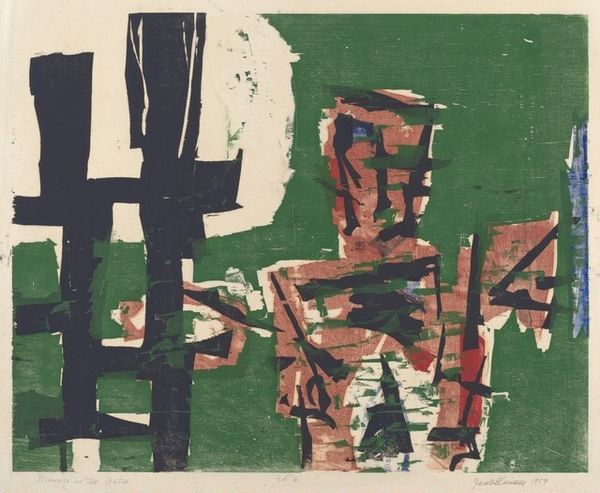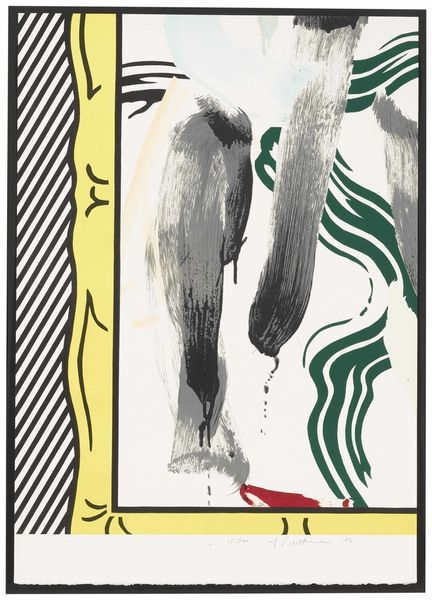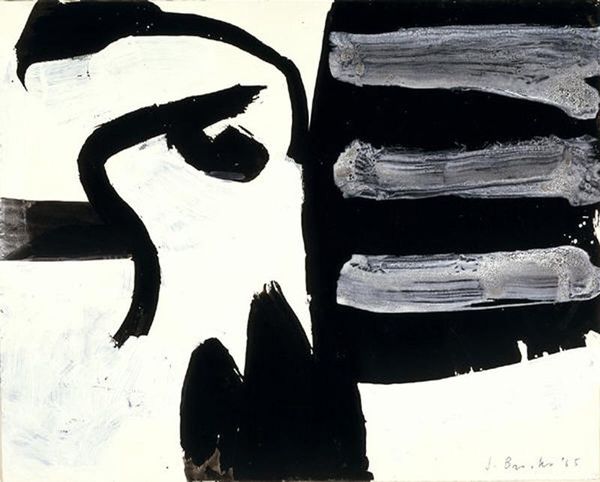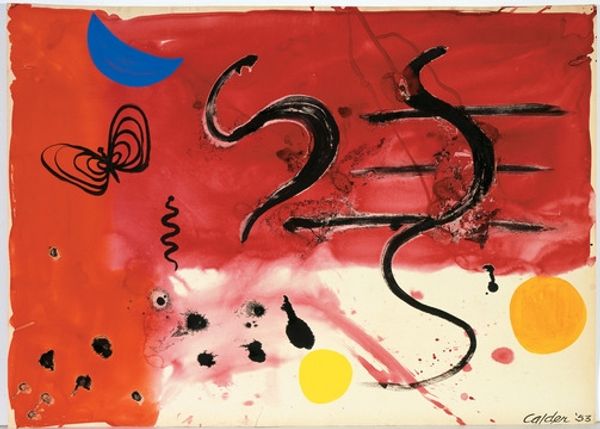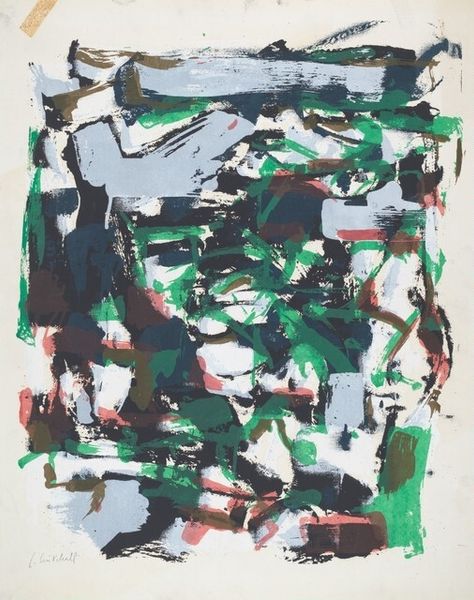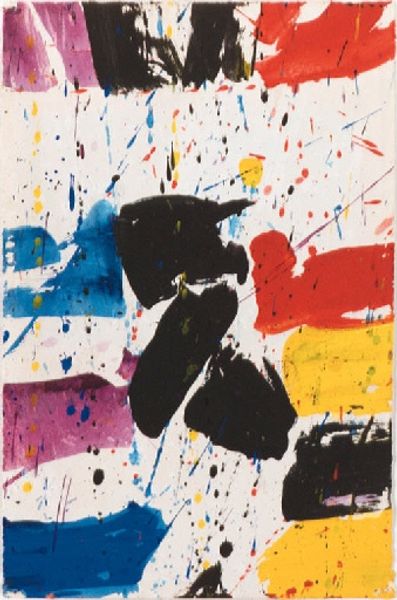
drawing, painting, oil-paint
#
stencil art
#
abstract-expressionism
#
drawing
#
painting
#
oil-paint
#
form
#
matter-painting
#
abstraction
#
line
Dimensions: overall: 30.2 x 25.4 cm (11 7/8 x 10 in.)
Copyright: National Gallery of Art: CC0 1.0
Editor: Here we have Hans Hofmann’s "Kootz Gallery," created in 1954, an oil on canvas piece. The use of bold colors and shapes creates an immediate sense of energy, a chaotic balance. What's your take? Curator: It’s interesting you pick up on that energy. Hofmann, deeply embedded in the New York School, was actively challenging academic traditions. What we see isn’t just abstraction; it's a declaration. How do the colors strike you in relation to the black shapes? Editor: The red and green flanking the central forms are visually arresting, especially against the gestural black marks in the middle. Is it commentary on something specific, perhaps relating to the Kootz Gallery itself? Curator: That's a sharp observation. The Kootz Gallery was known for championing avant-garde art, and Hofmann was one of its leading figures. Think about the socio-political climate: the rise of McCarthyism, the pressure to conform. Could these bold colors and assertive forms be interpreted as a rejection of that repression, a visual shout of individuality? Consider also his theory of “push and pull” – how might that apply here, beyond the purely formal aspects? Editor: So the visual tension isn’t just aesthetic, but potentially a reflection of broader societal tensions. The push and pull becomes a metaphor. Curator: Exactly. And within the context of Abstract Expressionism, where artists like Pollock and de Kooning were exploring personal narratives on a grand scale, Hofmann’s approach is equally valid but perhaps more pointed. Where do you see the artist's hand, the artistic choice, beyond just the pure act of painting? Editor: The black strokes, almost like calligraphy, give it a spontaneous feel, yet there's control too. The rawness feels very deliberate, conveying a message. Curator: Yes. This work functions as both painting and statement. It exemplifies the power of abstraction to convey complex ideas about freedom, individuality, and resistance. Editor: I see it now – a conversation with the culture of the time! I would never have understood the dialogue going on, if not for your interpretation. Thank you.
Comments
No comments
Be the first to comment and join the conversation on the ultimate creative platform.

